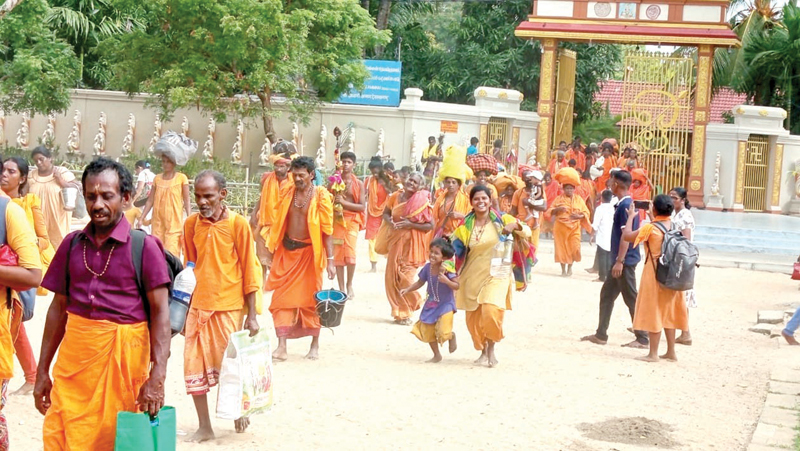As the sacred Esala season dawns, the town of Kataragama, is awakening to the rhythmic arrival of thousands of dust-covered feet across the temple threshold; feet that have traversed dense jungles, rugged terrain, and scorching plains, driven not by duty, but by devotion.
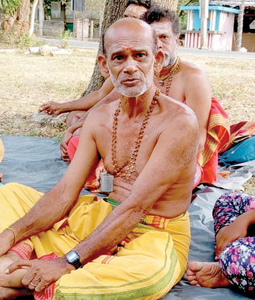
Kamalananda
These are the pilgrims of the Esala season, who each year, undertake one of Sri Lanka’s oldest and most revered spiritual journeys; the foot pilgrimage to the Ruhunu Maha Kataragama Devalaya.
The annual Esala festival of the Ruhunu Maha Kataragama devalaya which is held in commemoration of the divine marriage between God Kataragama and Goddess Walli, commenced on June 26 and will continue until July 10. Kataragama is once again transforming into a hub of ritual, reverence, and multi-cultural unity. Devotees from across the island: Jaffna, Mannar, Trincomalee, Batticaloa, Ampara, Nuwara Eliya and Bandarawela and other areas have already arrived at the sacred city of Kataragama to witness the grandeur of the festival.
The Kataragama foot pilgrimage is not merely considered as a physical trek, but it is a sacred vow, a deeply personal journey of faith. Historically, pilgrims would spend up to three months walking through dense forests, often without food, shelter, or safety, all for a brief moment to kneel before the deity of Kataragama. Today, the journey remains difficult but shorter, as a result of the improved infrastructure. Yet, many pilgrims still choose the old, difficult path not out of necessity, but out of reverence.
The Kataragama Esala festival is regarded as one of Sri Lanka’s oldest religious pageants that blend history, legend, and spirituality. It is believed that King Dutugemunu, after defeating King Elara, built the present-day shrine in gratitude to God Kataragama for his divine support in unifying the country.
He said that rituals in the Devalaya must continue “for as long as the sun and the moon shall shine”, a verdict still honoured until today.
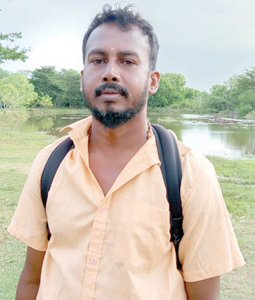
Rajadore
This festival is one of only two in the country, the other being the Temple of the Sacred Tooth Relic in Kandy, where royal customs and ancient rituals are preserved and practised, even in the absence of monarchy since 1815.
Pilgrims on the move
This year, the sacred foot pilgrimage began on May 1, with devotees setting out from the Nallur Kovil in Jaffna, walking through towns and wilderness alike. On June 20, the authorities opened access through the Kumana and Yala National Parks, allowing the traditional jungle route to resume. By June 23, the first group of pilgrims had already arrived at the Devala premises.
Over 18,000 pilgrims had reached Kataragama within three days of the route’s opening. Their journey takes them through Kumbukkan Oya, Palatupana, Manik Ganga, and Katagamuwa.
Thondamanaru, an elderly pilgrim who completed the trek in just three days said, “I walked through the heart of the forest. It was beautiful. I encountered wild animals but faced no danger. With the blessings of the deity, I’ve walked this path three times, even at this old age.”
Another devotee, Kamalananda from Puttalam, arrived with six members of his family said, “We saw elephants along the way but were unharmed. We came with deep faith, and that alone protected us.”
Rajadore, from Ampara, now in his fourth consecutive year said, “Even the wildlife officers and Army personnel treat us with respect. This pilgrimage shows that people from all communities can unite through faith.”
From harsh forests to sacred waters

Thondamanaru
The pilgrimage often concludes with a symbolic act of ritual bathing in the Manik River. The pilgrims continuously chant Haro Hara (Meaning; ‘‘God Almighty, please rid us of our sufferings and grant us salvation’’) and immerse themselves in this sacred river’s cool, cleansing flow. It marks the end of their journey and the beginning of a renewed spiritual life, many vowing to return the next year.
While some arrive by bus or car, a considerable number of Hindu pilgrims, especially the elderly and devotees from rural areas continue to walk throughout this religious journey.
The Esala Festival not only celebrates them but also serves as an inspiration to national unity. It attracts Buddhists, Hindus, Muslims, and Christians, all drawn to the sacred site that welcomes anyone who approaches with reverence.
The festival includes traditional peraheras (processions), offerings, dances, fire-walking, and spiritual observances that have remained unchanged for centuries. It is during this time that Kataragama becomes a living museum of Sri Lanka’s multi-cultural faith traditions and shared spiritual heritage.
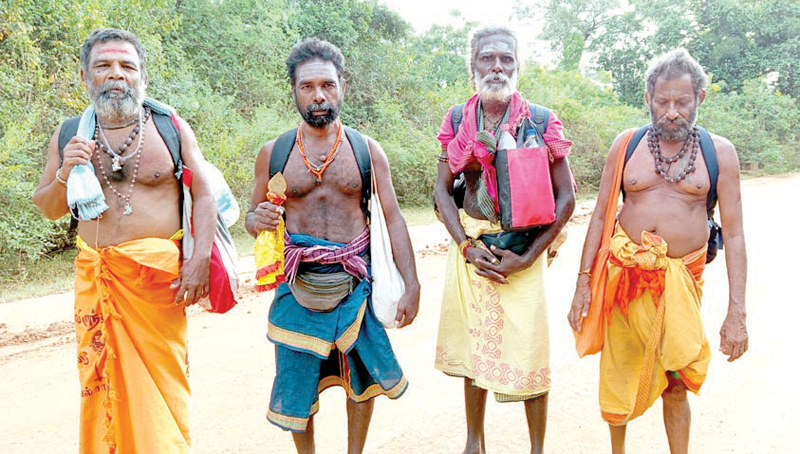
Devotees on foot through the Yala forest reserve
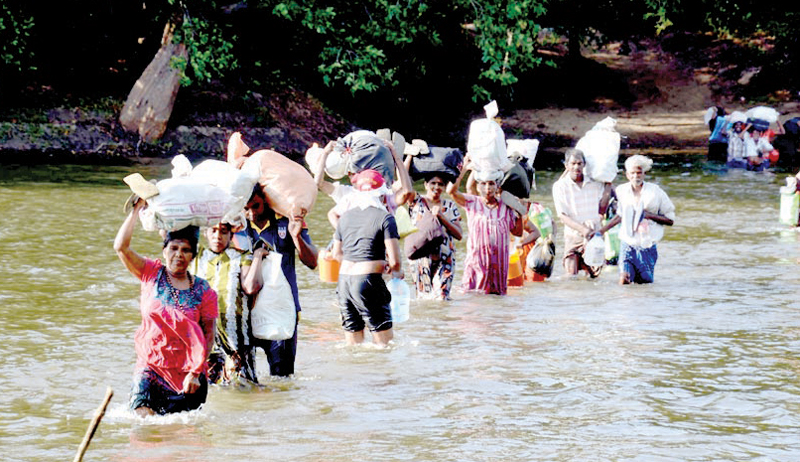
Pilgrims crossing the Manik River






